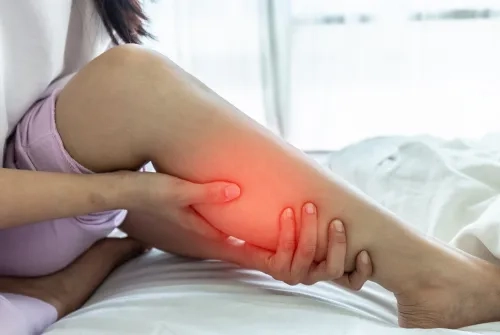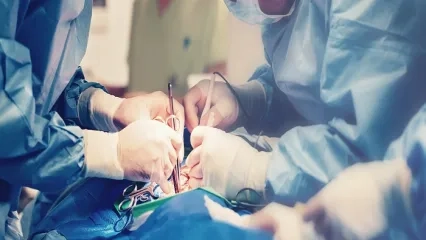Alo Yeditepe
Alo Yeditepe
Which Diseases Can Swelling in the Legs Indicate?
Many people, young and old, complain of swelling in their legs, especially in the summer months, as the veins dilate with the increase in heat. Yeditepe University Kozyatağı Hospital Cardiovascular Surgery Specialist emphasizes that this problem, which arises due to many reasons from long periods of inactivity to excess weight, kidney failure to heart diseases, should be taken seriously. Because the form and character of edema can change in any case.
The blood that comes to feed the legs is transported back to the heart through the veins and lymphatic system. Occasionally, the increase in incoming blood, sometimes the excess in its passage to the tissues, and sometimes the disruptions in its transport back to the tissues cause the balance in circulation to deteriorate, causing edema. Yeditepe University Kozyatağı Hospital Cardiovascular Surgery Specialist says that venous or lymphatic system disorders, heart or kidney failure, pregnancy, excess weight, and inactivity can cause edema to occur effectively on these mechanisms. However, infection, connective tissue diseases, some blood pressure medications, and some antirheumatic drugs can cause edema as a side effect.
It Can Manifest in Different Ways
Our specialist, stating that edema in the legs, also defined as peripheral edema, can occur in different ways, continues: "Edema can give a symmetrical image in both legs, or it can be seen only in one leg. Some edema is accompanied by pain, while others do not. In some cases, we see that leg swelling is not accompanied by feet. Peripheral edema is dangerous when it is sudden onset, unilateral, and very painful. Sometimes, we can see that the edema is accompanied by skin redness."
The Nature of Edema May Be a Symptom of an Underlying Disease
The nature of the edema also varies, as each patient's underlying disease causing the edema is different. Pointing out that this situation gives clues about diseases in the diagnosis phase, our specialist said, "Symmetrical swelling of both legs brings to mind causes that affect our entire body, such as heart, kidney, or thyroid failure, low protein in the blood, and drug reactions. In cases where edema occurs in one leg, we consider circulatory problems that only concern that leg, such as a varicose vein or lymph insufficiency. Edema may also be bilateral when these circulatory problems affect both legs. The fact that swelling is not accompanied by pain and the more intense occurrence of edema in the feet should suggest lymph insufficiency. Redness, pain, and increased skin temperature of the edematous leg suggest infection.
Beware of Unilateral Sudden Onset of Painful Edema!
Our specialist, who pointed out that unilateral, sudden onset edema accompanied by severe pain can be dangerous because it can be a sign of a sudden blockage in the leg veins, said, "These edema caused by sudden blockages in the leg veins can lead to serious problems when they are not treated as necessary. It cannot be said that edema with no sudden onset is not a significant problem. If peripheral edema is left untreated for whatever reason, it can lead to dermatitis and thickening of the skin over time, and even wound dehiscence."
May Become Chronic if Treatment Is Delayed
Because lifting the legs facilitates the return of blood to the heart, patients often complain that their complaints go away in the morning. However, during the day, depending on the severity of the underlying disease and the person's activity, edema begins to become evident at noon or in the evening. Our cardiovascular surgeon points out that in patients who have had peripheral edema for a long time and have not received the necessary treatment, the edema may be permanent and may not go away with rest.
How to Reduce Edema?
Peripheral edema treatment is based on the underlying disease. According to the information provided by our Cardiovascular Surgery Specialist, diuretics are used in patients with cardiac and renal insufficiency. In thyroid patients, hormone supplementation is performed. In cases where there is a drug reaction, the patient's treatment is reviewed again. Explaining that the problem can be solved with both medication and surgical methods in vein complaints, Yeditepe University Hospital KVC Specialist stated, "However, there is no surgical or drug treatment for lymph-induced edema for which there is widespread consensus. Lifting the legs especially above the level of the heart, increasing movement, losing excess weight, using appropriate compression stockings, and massaging the legs help reduce peripheral edema in all patients."
This content was prepared by Yeditepe University Hospitals Medical Editorial Board.
”
See Also
- What is a Bypass? How is Bypass Surgery Performed?
- Surgical Treatment of Heart Valve Diseases
- He Went to the Hospital with Leg Pain, Discovered His Carotid Artery Was 95% Blocked
- Does an Aortic Aneurysm Show Symptoms ?
- What is an Aortic Aneurysm? How is it treated?
- Aortic Aneurysm
- You Can Be Protected from Varicose Veins During Pregnancy
- Drug Treatment is Priority Leg Vein Obstructions
- Cardiovascular Diseases
- Pain in the Legs May Be a Sign of Vascular Congestion
- Stay Away from Depression and Protect Your Heart!
- Do Not Let Varicose Veins Be Your Nightmare During Pregnancy!
- Frequently Asked Questions About Varicose Vein
Alo Yeditepe





